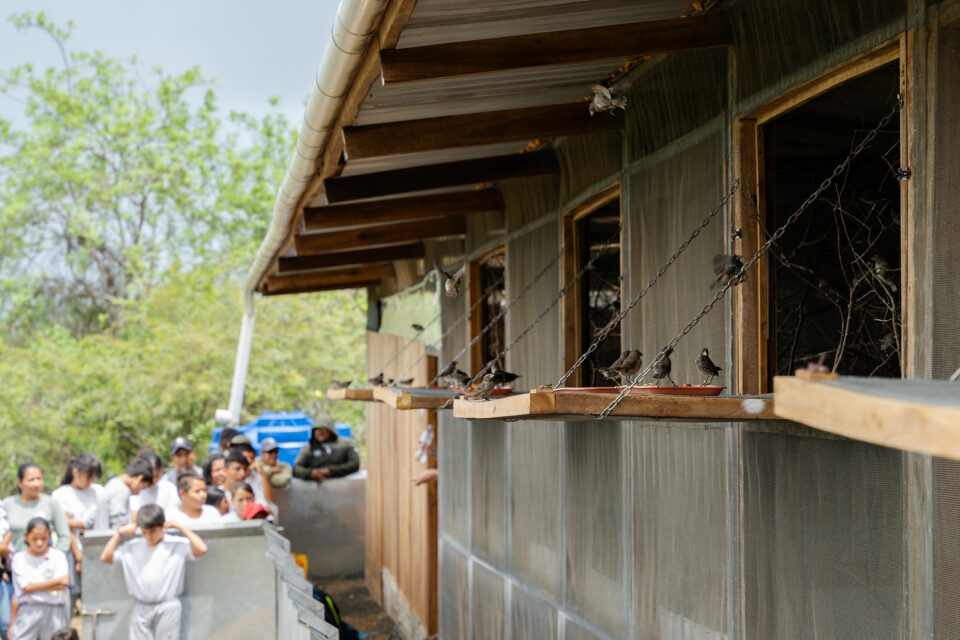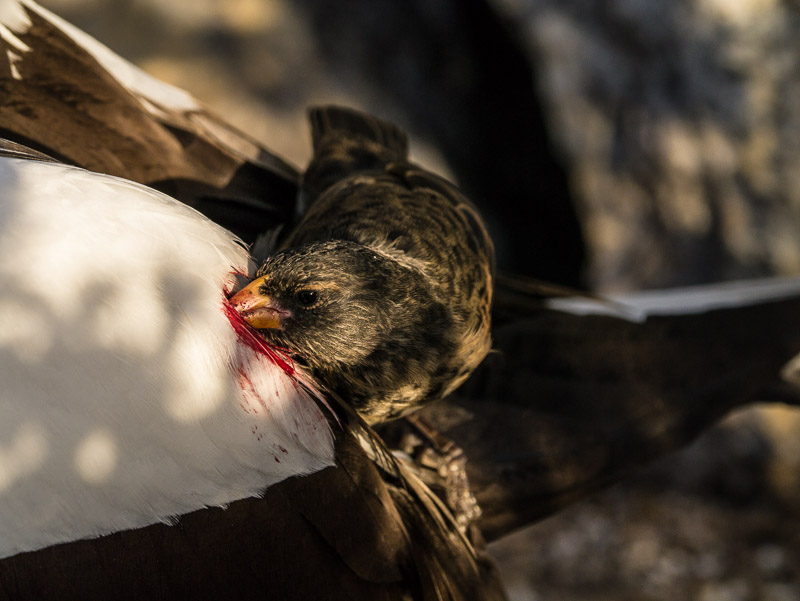

Of Vampires on Wolf (but this is no Twilight novel!)
On this remote volcano, these cute little birds have changed. These finches have evolved. These finches are vampires.
The Galapagos Islands are renowned as a crucible for evolution. Famously, the ancestral finch species, following its arrival from South America, radiated and adapted to the varying environmental conditions available on the different islands. Fourteen species are now found through the archipelago. On Santa Cruz, where I started my Galapagos journey, these birds are small, friendly and ubiquitous.

So innocent looking…but wait…
Santa Cruz was large, wet and forested. Wolf Island, in the far north of the archipelago, struck me as a very different place. Wolf lies 140 kilometres north of the main islands, created by a different volcanic system. It is tiny, less than three kilometres in size. The island is closed to visitors and rarely visited even by park staff or scientists: the first landing was in 1964, with the aid of a helicopter. On this remote volcano, these cute little birds have changed. These finches have evolved. These finches are vampires.
I know, I know, vampires are so 2008, but these little bloodsuckers have been around somewhat longer. They are a subspecies of the sharp-beaked ground finch, found on several islands. On Wolf, a lack of natural water sources mean the island is extremely dry for most of the year. The best source of fluid available? Blood.
Nazca boobies nest in abundance on the island, their permanently quizzical countenance greeting us in the hundreds upon arrival.

The finches flit amongst them, occasionally landing on their folded wings, whereupon they start pecking.
The blood flows freely over the boobies’ white plumage. Multiple finches were sometimes taking turns to lap it up.
Although it looks macabre, to put it lightly, the boobies did not appear overly troubled. In fact, they barely seemed to notice the finches. This blood-drinking behaviour is thought to have evolved from the finches pecking out parasites, so perhaps the boobies haven’t cottoned on to the finches changing the arrangement.
All in all, an interesting afternoon. The harsh terrestrial environment of the Galapagos has led to some fascinating adaptations amongst the animals that call it home. I’m looking forward to exploring these further in posts to come!
Jonathan and Simon gratefully appreciate the Galapagos National Park authorities granting them a permit to land on Wolf. This photographic expedition was sponsored by a grant from the GLC Charitable Trust to the Marine Megafauna Foundation, and supported by the Galapagos Conservation Trust. Thanks to the crew of the Queen Mabel for all their help over this two week trip.
Related articles


Double your donation to rewild Galapagos with the Big Give

Promising signs on Floreana as five species of finch are released







